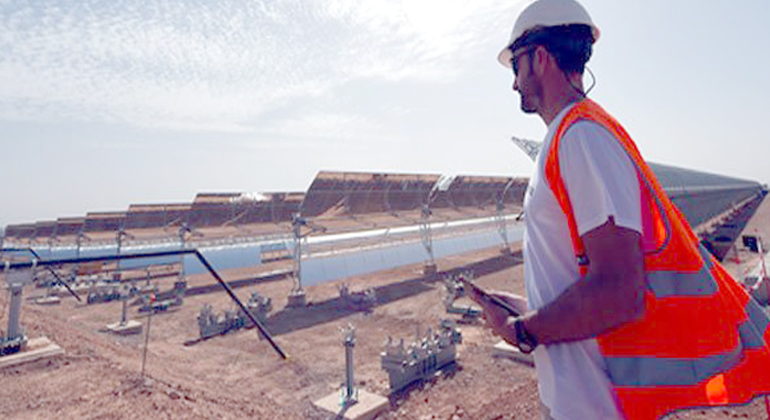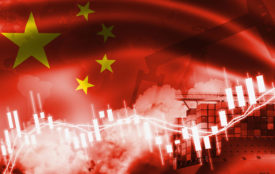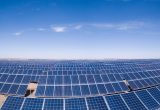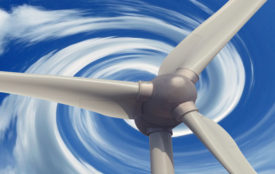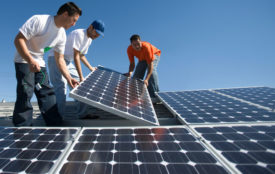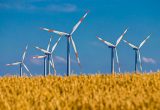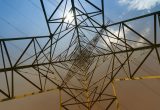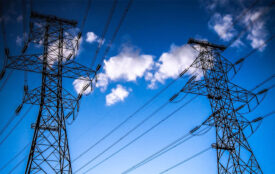Why Africa is the next renewables powerhouse
It is increasingly clear that Africa has the potential to lead the world in scaling-up and generating renewable energy.
The potential was made clear by delegates and speakers at Energy Day, on the African Development Bank pavilion at COP24 in Poland.
Sessions such as ‘Unlocking Commercial Finance for Small-Scale Renewable Energy in Africa’ covered the African Development Bank’s “Facility for Energy Inclusion” (FEI) – a $500 million debt platform for small-scale renewables that aims to provide senior and mezzanine debt financing to small-scale projects and off-grid solutions, whilst a panel of speakers shared news about the ‘Desert to Power’ initiative, which seeks to harness the sun of the Sahel region across 11 countries in one of the biggest solar projects in the world.
A later session drew lessons on energy efficiency in Africa; despite the huge renewable generation potential, this is still a critical element in the sustainable future for the region.
Africa has an almost unlimited potential of solar capacity (10 TW), abundant hydro (350 GW), wind (110 GW), and geothermal energy sources (15 GW). The International Renewable Energy Agency (IRENA) estimates that renewable energy capacity in Africa could reach 310 GW by 2030; which would put the continent at the forefront of renewable energy generation globally.
There is huge scope for Africa to build a climate-resilient and low-carbon continent, with attractive investment opportunities in climate-resilient infrastructure, climate-smart agriculture, and the sustainable management of natural resources.
Africa needs a renewable energy revolution: the continent holds 15% of the world’s population, yet may have to pay nearly 50% of the estimated global climate change adaptation costs. These costs will cut expenditure on health, water supply, agriculture, and forestry, despite the continent’s minimal contribution to global emissions. And that’s not to mention the energy deficit that continues: most of the 600 million people without access to electricity live in Sub-Saharan Africa. This energy poverty across the continent holds back African economic development, and is estimated to cost the continent between 2% and 4 % of GDP annually.
Speaking about the ‘Desert to Power’ project in the Sahel region, Magdalena J. Seol, the African Development Bank’s representative for the initiative, has noted that: “Without energy, it’s impossible to imagine economic growth. A lack of energy has been one of the key factors that has hindered the economic development of the region.” In order to catalyse the transition to renewable energy, the African Development Bank has placed energy at the top of its High 5 priorities and launched the New Deal on Energy for Africa with an overarching goal of universal energy access in Africa by 2025.
This will be achieved through expanding grid power by 160 GW, and connecting 130 million people to the grid. Additionally, the Bank aims to connect 75 million people to off-grid systems and provide 150 million households with access to clean cooking energy. The African Development Bank is also working with African countries to transform their energy utility sectors and attract investment in new energy markets.
Joao Duarte Cunha, Manager for Energy Initiatives and Partnerships at the African Development Bank said, “We provide support along the entire project development continuum, providing resources from seed capital to technical assistance, debt finance and investments in private equity funds to build a renewable energy pipeline for Africa. We also work closely with governments to understand and tackle policy issues to create the right enabling conditions for this sector to thrive.”
In a final closing statement in the Unlocking Commercial Finance for Small-Scale Renewable Energy in Africa’ session, Dean Cooper – Energy Sector Market Development Manager at SNV, a non-profit international development organization founded in the Netherlands – said: “Energy… makes things happen – we need to always keep this in mind”.
—
Photo: The Ouarzazate solar complex in Morocco is one of the largest concentrated solar plants in the world. It has produced and delivered over 814 GWh of clean energy through the national electric grid since 2016. Last year, the solar plant saved 217,000 tons of CO2.
For Morocco, which until recently sourced 95% of its energy needs from external sources, this project is part of a drive to diversify sources of production and generate value from renewable energy sources. It is hoped that the country will increase its share of renewable energy to the total energy consumption to 42% by 2020. The Ouarzazate solar complex project uses an innovative financing structure, which pools the capacities of independent power producers, who then sell the generated power back to the government in a public-private partnership.
The project’s financing support mechanism will reduce the capital cost of solar power to levels comparable with traditional technologies and the wholesale cost of power in Morocco.
